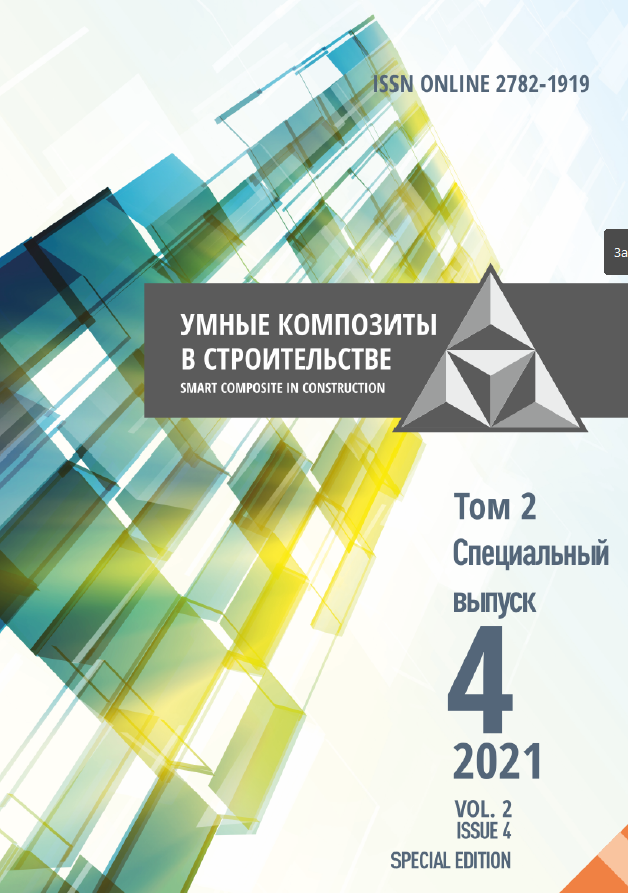Ivanovo, Ivanovo, Russian Federation
624.012.45
The paper considers a new method of detecting the carbonization of concrete that can be successfully applied at the field and laboratory stages of examining building structures made of reinforced concrete. The study included cases of carbonization and evaluated its influence on durability of civil, industrial, transport and other various building structures made of concrete and reinforced concrete. The paper includes examples of facilities where surveys can be conducted using the new method. This method was also compared with that of the phenolphthalein indicator solution in terms of its effectiveness. The new method makes it possible to assess the state of the protective layer of concrete and identify the zones where the corrosion of concrete, which is associated with mass transfer of the target component, has just begun or is fully running. A disadvantage of the phenolphthalein indicator solution method (PISM) is that it does not show a complete picture of the pH distribution of concrete over the layers, since the indicator has 1 working color transition interval. A new promising method makes it possible to assess the condition of the examined reinforced concrete structures for their durability and the degree of damage, since it has an increased accuracy in comparison with the phenolphthalein indicator method. The results obtained by the new method can be used both to organize/calculate physical and mathematical models of mass transfer process development during concrete corrosion and to organize the repair of reinforced concrete and concrete building structures.
corrosion, carbonization, concrete, reinforced concrete, in spection, phenolphthalein indicator, universal indicator, mass transfer
1. Shaly E.E., Kim L.V. Chloride corrosion of marine concrete. Vestnik inzhenernoj shkoly DFU. 2018. N 2 (35). P. 101-110. DOI.org/10.5281/zenodo.1286036 (in Russian).
2. Solovyov V.G., Shuvalova E.A., Orekhova A.Yu., Tyurina A.A. Analysis of defects and damages of reinforced concrete structures, typical for underground structures, on the example of civil defense structures. Izvestiya vuzov. Investicii. Stroitel'stvo. Nedvizhimost'. 2019. V. 9. N 1 (28). P. 124-133 (in Russian).
3. Dobromyslov A.N. Diagnostics of damage to buildings and engineering structures. Reference manual. M.: Izd-vo ASV. 2006. 256 p. (in Russian).
4. Rumyantseva V.E., Goglev I.N., Loginova S.A. Application of field and laboratory methods for the determination of carbonation, chloride and sulfate corrosion in the examination of building structures of buildings and structures. Stroitel'stvo i tehnogennaya bezopasnost'. 2019. N 15 (67). P. 51-58 (in Russian).
5. Loginova S.A., Goglev I.N. Modeling the kinetics and dynamics of mass transfer in various types of cement concrete corrosion. Vestnik Cherepoveckogo gosudarstvennogo universiteta. 2020. N 6 (99). P. 22-35. DOI: 10.23859 / 1994-0637-2020-6-99-2 (in Russian).
6. Rybnov D.S., Goglev I.N., Sokolov K.Yu. RF Patent. N 2755246. 2021.
7. Fedosov S.V., Rumyantseva V.E., Loginova S.A. Features of the biodegradation of hydraulic concretes. Umnye kompozity v stroitel'stve. 2020. V. 1. N 1. P. 45-55. URL: http://comincon.ru/index.-php/tor/V1N1_2020 (in Russian).
8. Ryazanova V.A. Features of sulfate corrosion of concrete in conditions of directional moisture transfer. Bashkirskij himicheskij zhurnal. 2016. V. 23. N 3. P. 45-52 (in Russian).
9. Fedosov S. V., Loginova S. A. Mathematical model of concrete biological corrosion. Magazine of Civil Engineering. 2020. V. 99(7). P. 56-66. URL: https://doi.org/10.18720/MCE.99.6
10. Leonovich S.N., Sviridov D.V., Karpushenkov S.A. Shchukin G.L., Belanovich A.L., Savenko V.P., Gurinovich V.YU. Physical and mechanical properties of concrete and corrosion of reinforcement in sodium chloride environment: the influence of amino alcohols. Stroitel'nye materialy. 2012. N 1. P. 34-36 (in Russian).
11. Morris W., Vico A., Vazquez M. The performance of a migrating corrosion inhibitor suitable for reinforced concrete. Journal of Applied Electrochemistry. 2003. V. 33. P. 1183-1189.
12. Al Qaradi Ali. Basic physical and mechanical properties of reinforced concrete. Vestnik BGTU im. V.G. Shuhova. 2013. N 5. P. 39-42 (in Russian).
13. Yoon I.-S. Deterioration of Concrete due to Combined reaction of Carbonation and Chloride Penetration. Experimental Study Key Engineering Materials. 2007. V. 348-349. P. 729-732.
14. Osipov S.N., Zakharenko A.V., Chik V.M. Some stochastic features of concrete and reinforced concrete carbonization. Nauka i Tehnika. 2019. N 2. P. 127-136. URL: https://doi.org/10.21122/2227- 1031-2019-18-2-127-136 (in Russian).
15. Vasiliev A.A. Calculation and experimental model of concrete carbonization. Gomel: BelGUT. 2016. 264 p.







